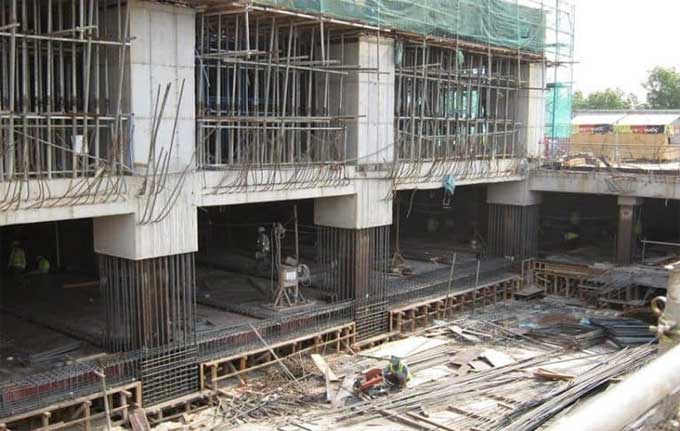
Know about the Top down methods in Construction

Buildings with subterranean structures are typically built using the bottom-up approach, in which sub-structure and super-structure layers are built one after the other, beginning at the building's base and proceeding upward.
It is unsuitable for projects with limited construction time or space. The top-down building technique is the solution to these problems.
The top-down approach is effective in situations where soil movements need to be kept to a minimum, and tieback installation cannot be carried out. This approach is often used in situations where the ground is unstable or there is a risk of landslides.
Top Down construction method
A top-down construction method is the opposite of the bottom-up construction method, which entails digging extensive excavations from the top to the base of a basement in order to build permanent structures.
An inside permanent framework is used in this case in order to support a top-down cast retaining wall, which is supported temporarily.
As the excavation proceeds, the higher-level slabs are built first because they will serve as horizontal supports for the walls as excavation proceeds, so they must be constructed before the lower-level slabs.
It is becoming increasingly common in the building sector to use top-down construction as an innovative method of earth retention that has been gaining popularity over the past few years.
How does it work?
Towering buildings with considerable foundations and underground projects such as subway stations, parking lots, and underpasses are the two primary forms of urban structures where the top-down approach is applied.
The initial phase in construction is to create a retaining wall; subsequently, load-bearing components that will support the future superstructure are placed.
Before excavation, basement columns, generally steel beams, are built and erected on the load-bearing components. Concrete piles or diaphragm wall panels are commonly used as load-bearing elements.
Steps of Top-down construction
Top-down construction follows the following procedure:
1. Construct the integrated retaining walls.
2. Build the piles and the surrounding walls, and position the steel stanchions where the piles are being built.
3. The floor slab of the first basement level is built with an entrance to allow equipment to be lowered to the level below and excavation debris to be removed?the commencement of the excavation's first phase.
4. The existing rate of construction of superstructures must be maintained.
5. After completing the second basement-level floor slab, proceed to the second excavation stage.
6. Repeat the method until the desired depth is reached.
7. Finish the basement by installing the foundation slab, ground beams, and so on.
8. Furthermore, the building of the superstructure can be done in line with the specified floor and heights.
Benefits of Top-down construction
Here are a few benefits of top-down construction:
1. To expedite development, the superstructure might be erected alongside the subsurface structures.
2. A permanent slab replaces the temporary support.
3. Construction may be completed quickly and economically since the roof can be cast on a prepared grade without the use of bottom forms.
4. Operating with little to no vibration lowers ground movement, which leads to settlements.
5. In comparison to traditional architecture, this method of construction necessitates a narrower excavation width. As a result, the cost and pollution are reduced.
6. It offers a sturdy support structure for the wall, minimizing movement.
7. There is no need to promote local development.
To learn more, watch the following video tutorial.
Video Source: Escuela Geot?cnica
Drawbacks of Top-down Construction
Here are a few drawbacks of top-down construction:
1. As the plant's size constraints and limited access, excavation and substructure building must go more slowly and at a higher cost. Applying waterproofing to the outside of a wall is difficult.
2. Waterproofing the exterior of the walls is a demanding task
3. There is a possibility that water will seep out at the joints.
4. It may be necessary to leave gaps in the slabs to allow for additional excavation.
5. As you descend to the foundation slabs, floors, and roofs, the connections get increasingly difficult.
6. There isn't enough space to construct a foundation slab since the excavation is difficult to reach.
7. Because the building stiffens during the transitional periods, the permanent structure might sustain greater weight.
8. The technique needs some vertical support for the permanent slabs.


